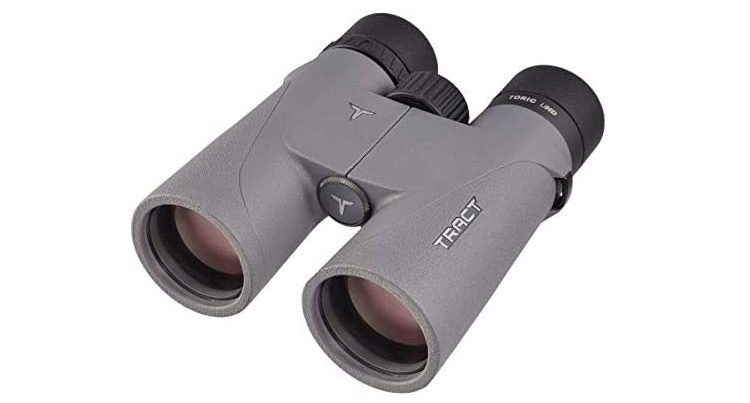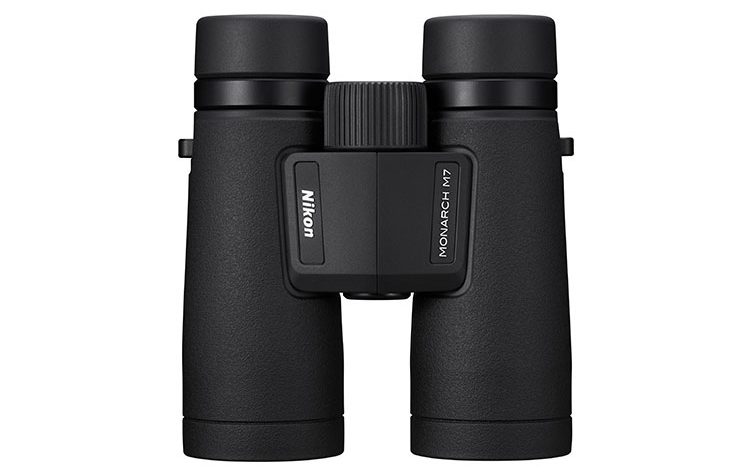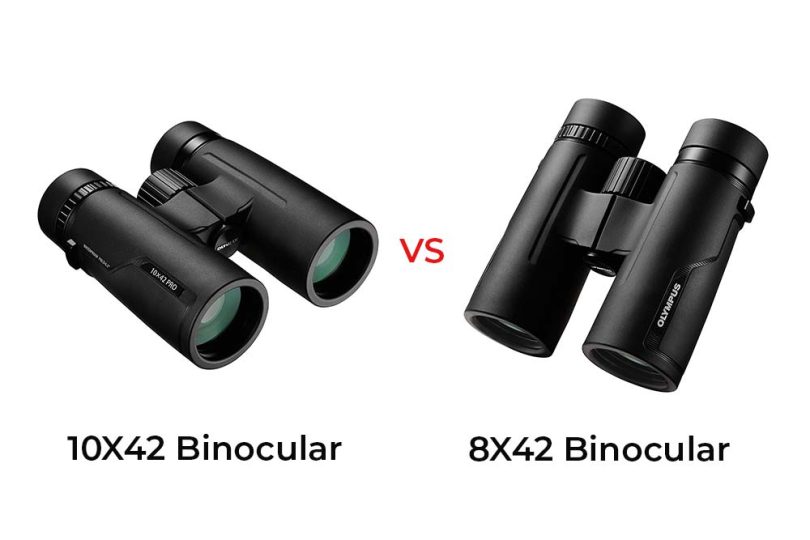Amongst hunters, birders, and other seasoned binocular users, it will be no news that your preferred choice would be the 10x 42 binoculars.
However, we are here to broaden your view and let you know why you should give the 8x a second thought.
Through this “10×42 vs 8×42 binoculars” comparison guide, we’ll help you make an informed decision that’ll serve you for years!
We intend to break down the pros and cons of the 8×42, when they are pitched against the 10×42 binoculars, for whatever it is you will like to use it for.
At first thought, people make the erratic assumption that the simple difference between the 10×42 and the 8×42 binoculars only lies in the magnification, but the differences hold in so many ways.
Pros and Cons of 10×42 Binoculars
Pros
- They are high-powered device that gives fantastic magnification for the user.
- Its high-powered ability gives it amazing quality resulting in better detail and identification.
- They give a better twilight factor
- As they have a higher range of magnification, they also can access further distance
- They are specialized for open wide field glassing.
Cons
- They display a thinner field of view.
- Slimmer exit pupil.
Pros and Cons of the 8×42 Binoculars
 Pros
Pros
- They are a cost-effective alternative to the 8×42 binoculars
- Like the 10×42, the 8x 42 is also high powered
- They are very stable: this is a great advantage over the 10×42 because this stability gives a balanced image even without steady hands.
- The 8x 42s field of view trumps that of the 10×42
- The larger exit pupil makes it all comfortable.
- They are for close-distance glassing.
Cons
- They are not practical when used for open-field glassing
- In as much as they are high-powered, they command lesser detail and information.
10×42 vs 8×42 Binoculars: Key Differences
Magnification
The 8x magnification is of inferior quality compared to the 10x.
To this effect, objects do not appear closer to you when using an 8x like they would look when you use a 10x lens.
If you target a farther distance, the lower magnification in the 8x makes for an inferior option.
However, considering the magnification power of the 10x, it comes with a catch; every simple or tiny movement you make becomes defined.
This offers difficulty when you want to lock into a target to view all of the details in the extra magnification gets you. Hence, they are not full-proof.
Field of View
What you win in the detail that comes with magnification, you lose in the bigger picture.
The field of view is how extensive of an environment can you view through the lens.
Often, the lower magnification binoculars create a wider field of view, making finding your target easy.
Peering through a 10x 42 provides a lesser field of view, making for a tasking find of a single tiny bird in the trees or any other little target in a vast area.
Eye Relief
The 8x 42 is optimized for those who wear glasses or intend to wear shades whenever they use binoculars.
Eye relief connotes the distance it takes from the eyepiece to where your eye will be capable of achieving a full field of view and a clear, crisp image.
In general,10x binoculars often have shorter high relief than their 18x counterparts. If you do not wear glasses, then this is not your problem.
However, those who wear glasses have to think about this if they are going to get binoculars.
If you use glasses, we recommend 16 mm of eye relief, but larger eye relief will be better.
Image Stability
You compromise image quality the higher powered you go. The slightest movement of the hand can be uncomfortable.
However, Comparing the 8x and the 10x image stability Is not an issue as the difference between them both is obvious.
Twilight Conditions & the Exit Pupil
If you are observant and look through the eyepiece, you will observe a small bight circle. They are called exit pupils.
The size of the exit pupil compared to your pupil’s size makes a difference in the brightness of the image you see.
It is important in times when the light is low, especially during twilight.
When the light is low, your pupils are going to dilate so that more of the little lights are detected.
If this happens, the exit pupil has to be bigger than your dilated eye else they look darker.
When it is low light, our pupils dilate approximately 7mm. However, both the exit pupil of the 10x and the 8x have an exit pupil diameter smaller than this.
So the image is going to look dark.
Further, the 8x 42 exit pupil is still larger than the 10x 42, making them a better option in low light.
Price
The last thing to consider is the price. Binoculars with farther magnification tend to command more coins.
Even though this is not always true, it has happened enough times to be regarded as a general rule.
If you are shopping for lower-priced high-quality binoculars, the 10x 42 costs more. However, you can still find 8x 42 of the same equality.
Only 10x 42 mostly costs more.
So, you can get a high-quality set of 8x 42 for the same price as a lower-quality set of 10x 42.
Transmittance & Glass Thickness
A common feature of the higher magnification binoculars is that they have a thicker lens, making less light pass through them.
Considering the difference between 10x 42 vs. 8x, 42 of equal quality is a minute. The 8x 42 gets the edge when the light gets lower.
Ease of Use
The 8x 42 have large exit pupils meaning more light escape.
The 8x 42 is way easier to line up with your eye, resulting in a fuller picture and no black rings around the edges of your view.
8×42 vs 10×42 Binoculars: Based on Activities
A question often asked is, when do you need 8 x 42 binoculars or 10x 42 binoculars?
We are going to go through all that in a jiff.
Rifle Hunting
If you are rifle hunting, it is likely that you are going to be moving through a wide and open area where maximum reach is required.
The extra reach makes it easy to spot prey before they go off. A 10x 42 binocular is recommended for this type of hunting.
Skill is essential, and you can even use it within a close range of your prey as they provide more detail of your target.
Even though you will be sacrificing the field of view, this should not be a problem.
Bow Hunting
Arrows do not go as far as bullets and here you might not need the reach.
Bowhunting successfully requires some discretion, meaning having a high power to find your target.
Bowhunting can take you to blind spots where the 10x would not be useful.
Here, you need the 8×42. Because of the wider field of view, it is easier to locate and follow moving targets in the woods. The 8x 42 is better for bow hunting.
Birding
It makes sense to use the 8x 42 for bidding because of its wider view.
However, slower-moving birds that are easy to locate, require more detail, here, the extra power of the 10x 42 is great.
Safari
Are you hunting or exploring in the African plains?
It can be dangerous spotting animals in the wide, so you have to be far away as possible from the action as possible.
The maximum reach of the 10x gives you a better advantage of insight than the predators that roam free on the African plains.
Event Observation
It can be un-noteworthy observing an event from afar. The wild view of the 8x 42 gives you ease in capturing the event as a whole.
10×42 vs 8×42 Binoculars: Physical Differences
The physical difference between the two lies in the diameter of the exit pupil. Ideally, they have basic structural similarities.
Differences in the physical features may arise based on the model, variety, and usage.
However, the 8x by 42 can look wider than the 10x 42, since the 8x 42 has a wider range of view.
Size and weight-wise, they are almost the same, and the differences between them are not noteworthy.
Conclusion
At the end of the day, there is no single best option between these two binoculars. However, they have specific activities they can be used for.
So, which is best can only be answered by which is best for what occasion.
FAQs:
Q. 1: Are 10×42 Binoculars Good for Bird Watching?
Ans: Yes, but there is a catch. A 10x binoculars are ideal for slow birds when detail is a priority; however, catching fast birds would require a binocular with a wide range of views.
Q. 2: What Power of Binoculars Is Best?
Ans: Look for binoculars within 7x to 10 power. However, power does not matter if you are at the back of a theatre. There you might need binoculars of 3-5x.
Q. 3: What Magnification Is Best for Bird Watching?
Ans: This is a personal choice. If you want detail, get the 10 x, but if you want to ease in spotting the bird get the 8x.








Leave a Comment